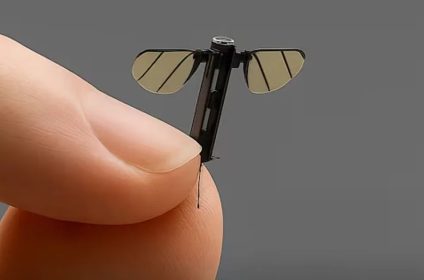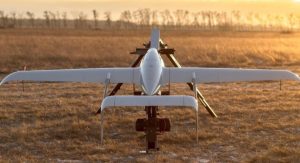China’s Mosquito-Sized Drone: Science Fiction Becomes Reality
Once the realm of cyberpunk fantasies, the concept of a mosquito-sized surveillance drone is now a reality. In mid-2025, China introduced a microdrone that is so diminutive and convincingly lifelike, it leaves many questioning where imagination ends and reality begins. Here’s a comprehensive guide to understanding this groundbreaking advancement in micro-robotics: the Chinese mosquito drone. We will explore its design, functionality, significance, and the intersection of science fiction with contemporary strategy.
The Mosquito Drone: Bionic, Bio-Inspired, and Nearly Invisible
Created by China’s National University of Defense Technology (NUDT), the new mosquito-sized drone is an almost perfect imitation of the real insect. It measures just 0.6 to 2 centimeters and weighs only 0.3 grams—lighter than a paperclip—allowing it to rest easily between two fingers or conceal itself as a real mosquito might. Built for stealth, its design includes a slender body, two or four dynamically flapping wings, and three legs capable of landing on diverse surfaces.
“Here in my hand is a mosquito-like type of robot. Miniature bionic robots like this one are especially suited to information reconnaissance and special missions on the battlefield.”
—Liang Hexiang, student demonstrator, NUDT
How Does It Work?
- Bionic flapping wings: These wings, driven by micro-actuators, flutter as swiftly as a mosquito’s, up to 500 times per second, facilitating quiet, agile flight and hovering.
- Sensors and Electronics: Despite its minuscule size, the drone is equipped with cameras, microphones, and sensor systems, enabling surveillance, live data gathering, and straightforward atmospheric analysis.
- Control: Certain prototypes can be managed via smartphones, rendering them both user-friendly and swiftly deployable.
- Variants: Experiments include two-wing and four-wing models, with the four-wing type providing enhanced flight stability.
Why the Hype? Strategic and Social Implications
Stealth to the Extreme
The drone’s size renders it largely invisible to traditional detection methods such as radar, visual spotters, and audio surveillance. Its silent operation and tiny profile allow it to seamlessly integrate into urban and natural landscapes, slipping by defenses where larger drones are easily noticed.
Military Game-Changer
- Reconnaissance: Mainly used for intelligence on battlefields, the drone can navigate hazardous zones or enemy territory—urban windows, tight crevices, indoor spaces—and return with video or audio recordings unattainable by regular drones.
- Special Operations: Its near invisibility and quietness make it ideal for covert operations like surveillance, eavesdropping, target marking, or causing diversions.
- Rescue and Disaster Response: These drones can reach areas too unsafe for humans, such as collapsed structures, poison zones, or nuclear sites, offering tremendous potential beyond combat zones.
Innovation Race
China’s success in unveiling this remarkable insect drone is part of a larger global competition. The Norwegian Black Hornet, slightly bigger but already in military service, inspired Western counterparts. Despite longstanding efforts by the US and Norway with insect-scale UAVs, China’s creation marks a new milestone in shrinking technology.
Not All Buzz: Limitations and Challenges
Tiny Drone, Big Engineering Problems
- Battery Life: Energy density is a critical concern. Conventional batteries may deplete rapidly, limiting flight duration to a few minutes unless new innovations arise.
- Payload Limits: Smaller drones can carry less weight, necessitating the miniaturization of components, often resulting in reduced data quality or range.
- Weather Sensitivity: These microdrones are vulnerable to breezes, air currents, and temperature changes, making them susceptible to falling in challenging weather conditions.
“… if powered conventionally (with a battery), its longevity in the air Will be limited by battery capacity. Also, it’s very light, and therefore easily buffeted by winds. … Even indoors, there can be conditions that could interfere with this drone’s performance, such as even a slight breeze.”
—Samuel Bendett, drone expert
Security and Ethical Concerns
- Covert Surveillance: With the capacity for nearly imperceptible spying, significant privacy and security ramifications arise, threatening espionage and cybercrime scenarios.
- Weaponization: Although no current evidence exists, these drones might someday be used to deliver toxins, small payloads, or hacking tools.
- Proliferation Risks: As this technology becomes cheaper, there’s a risk of unauthorized groups, such as criminals or terrorist factions, gaining access to these drones.
From Lab to Field: Status and Real-World Use
Despite its impressive nature, this Chinese mosquito drone is largely experimental and not yet widely deployed. It has been showcased on national television and tested under controlled conditions, yet actual field usage presents significant challenges.
Expert Opinions
- Potential: Analysts suggest that its compact size makes detection by standard radar difficult.
- Doubts: Experts, especially from the U.S., are skeptical of its functionality in practice, despite the technical feasibility.
- Strategic Value: If made operational, mosquito drones might access spaces human agents cannot, providing unparalleled reconnaissance capabilities.
Case Study: Microdrones in Rescue Ops
In disaster recovery scenarios, these drones could inspect building ruins, fires, hazardous spills, and earthquakes to locate survivors, assess dangers, or facilitate communication from trapped individuals.
The Future is (Almost) Here: What Science Fiction Got Right
The allure of insect drones has long been featured in pop culture:
- Movies: Films like “Blade Runner 2049,” “Minority Report,” and “Big Hero 6” portrayed nano-drones as ubiquitous spies.
- Games: Video games such as “Deus Ex: Mankind Divided” and “Watch Dogs: Legion” allowed players to use tiny drones for covert hacking and sleuthing.
- Memes and Urban Legends: Anecdotes about being observed by “CIA bugs” or “robot mosquitoes” are inching closer to reality.
Your Questions Answered: Real-World Impacts & Next Steps
Will these drones change daily life?
Not immediately, but soon, everyone from journalists to law enforcement might need to rethink their behavior around an elusive “insect.”
What about security and anti-drone defense?
Expect a rise in anti-microdrone technology: acoustic detectors, micro-radars, AI swarms made to track similar devices, or even electronic flyswatters for modern times.
Can civilians buy or use similar technology?
Currently, not at this level. Today’s consumer “nano drones” resemble larger insects, popular with hobbyists, but advances in miniaturization hint at smaller, smarter, more affordable models soon.
What does this mean for the drone industry?
Innovation and competition will likely increase. Military microdrone breakthroughs often lead to civilian applications, including inspection of difficult-to-reach mechanical components, pollution tracking, or plant pollination.
Final Thoughts: Beyond the Hype
China’s mosquito-sized drone is not just a technology exhibition—it signifies a shift in robotics scaling, challenging us to think in millimeters rather than meters. As innovation swarms forward, whether you’re into business, defense, technology, or simply enjoying evenings outdoors, the next decade promises a surge of advancements. And if a pesky mosquito seems unusually consistent at your next gathering, it might not hurt to verify if it’s a mere insect after all.













